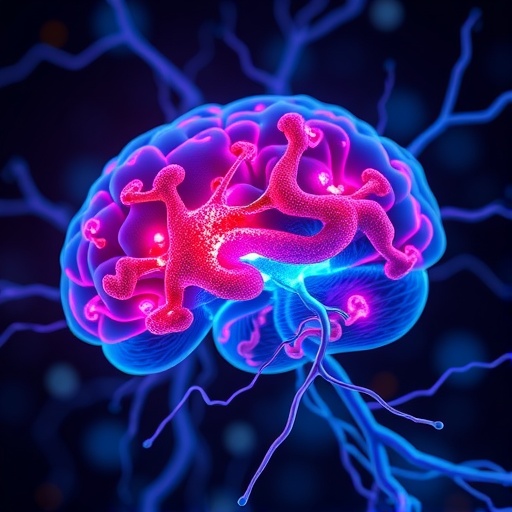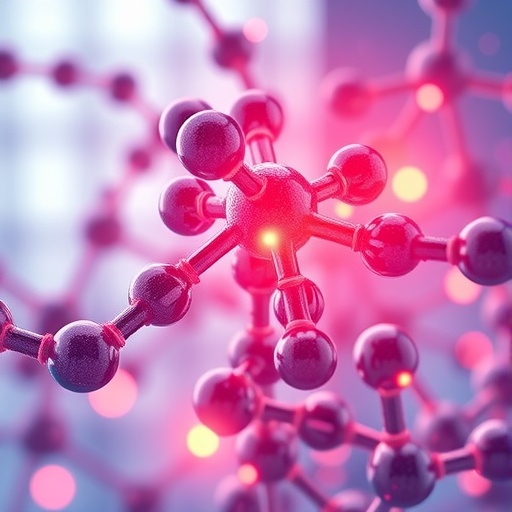Tauopathies are traditionally defined by the pathological aggregation of tau protein, a microtubule-associated protein crucial for stabilizing neuronal cytoskeletons. When tau proteins become hyperphosphorylated or structurally altered, they detach from microtubules and self-aggregate into neurofibrillary tangles, promoting synaptic dysfunction and neuronal death. However, the molecular cascades driving tau accumulation and toxicity have remained incompletely understood, with particular gaps concerning metabolic alterations occurring in affected brain regions. This new study illuminates the metabolic derangements associated with tauopathy, identifying aberrant glycogen accumulation within neurons as a key pathological hallmark.
Using a genetic model of tauopathy in Drosophila melanogaster, the researchers demonstrated that neuronal glycogen metabolism is disrupted, mirroring findings in postmortem brain tissue from individuals with Alzheimer’s disease. Glycogen, the storage form of glucose primarily recognized in liver and muscle, also exists within neurons where its functional significance has long been enigmatic. Here, the accumulation of glycogen in neurons bearing tau pathology suggests that tau interferes with normal glycogen homeostasis, possibly by direct interaction. This insight challenges prior assumptions and positions neuronal glycogen metabolism as a vital factor in neurodegenerative disease mechanisms.
.adsslot_mLXb8SAC2I{ width:728px !important; height:90px !important; }
@media (max-width:1199px) { .adsslot_mLXb8SAC2I{ width:468px !important; height:60px !important; } }
@media (max-width:767px) { .adsslot_mLXb8SAC2I{ width:320px !important; height:50px !important; } }
ADVERTISEMENT
The mechanistic underpinnings of this process involve the redirection of glucose flux toward the pentose phosphate pathway (PPP), a metabolic route that generates reducing equivalents such as NADPH necessary for antioxidative defense. By facilitating glycogen breakdown, neurons can channel glucose into the PPP, thereby reinforcing cellular capacity to neutralize reactive oxygen species and mitigate oxidative stress—a well-documented contributor to neuronal injury in tauopathies. This metabolic reprogramming highlights a critical link between energy metabolism and redox balance in neurodegenerative disease progression.
Beyond highlighting a novel molecular target, this research also sheds light on the neuroprotective role of dietary restriction (DR). DR, recognized for its healthspan and lifespan-extending properties across species, was shown to promote glycogen breakdown in neurons, thereby reducing oxidative stress and ameliorating tauopathy phenotypes. These findings may reconcile longstanding observations of the benefits of metabolic interventions in neurodegenerative disease models, now mechanistically linked through glycogen metabolism modulation.
The implications of these discoveries extend well beyond tauopathies. Given that impaired energy metabolism and oxidative damage are hallmarks of many neurodegenerative disorders, the strategy of enhancing neuronal glycogen catabolism could have far-reaching applications. Targeting metabolic pathways to rebalance energy homeostasis and reduce oxidative stress offers a versatile therapeutic framework applicable to diseases such as Parkinson’s disease, Huntington’s disease, and amyotrophic lateral sclerosis.
Methodologically, employing both an established invertebrate model and human iPSC-derived neurons lends strong translational relevance to the findings. The complementary use of Drosophila allows for rapid and precise genetic manipulations to dissect mechanistic pathways in vivo, while human neurons provide a clinically pertinent context for validation. This integrative approach exemplifies the kind of multi-level research necessary to advance potential therapies from bench to bedside.
The discovery of glycogen accumulation as a pathological feature in tauopathy brains also opens new frontiers in neuroimaging and diagnostics. Advanced imaging methods targeting glycogen or its metabolic byproducts might facilitate earlier or more accurate detection of tau-related disease states, improving patient stratification and treatment monitoring. Similarly, metabolic biomarkers related to neuronal glycogen turnover may emerge as valuable tools in clinical trials assessing the efficacy of metabolic modulators.
Importantly, this study challenges the traditional view of glycogen in the brain as a minor, ancillary player and elevates its role as a dynamic contributor to neuronal health and disease. The interaction between tau and glycogen suggests that protein aggregation disorders cannot be fully understood without integrating metabolic context, urging a move away from purely protein-centric perspectives toward a systems biology framework inclusive of neuronal metabolism.
Therapeutic avenues that stimulate glycogen breakdown might include pharmacological activators of glycogen phosphorylase or other enzymes involved in glycogenolysis, or metabolic interventions that stimulate PPP activity. Furthermore, lifestyle modifications such as intermittent fasting or controlled dietary restriction might be harnessed as adjunctive measures to potentiate endogenous neuroprotective mechanisms linked to glycogen metabolism, an exciting prospect for non-invasive disease management.
Extensive future research will be required to fully elucidate the molecular interface between tau and glycogen, the regulatory mechanisms controlling neuronal glycogen metabolism under physiological and pathological conditions, and to translate these findings into safe and effective clinical treatments. Nevertheless, the study by Bar et al. marks a pivotal advancement in neurodegenerative disease research, reframing tauopathy pathology within the context of neuronal metabolic dysfunction and offering renewed hope for therapy development.
In conclusion, the newly uncovered role of neuronal glycogen metabolism in modulating tauopathy pathogenesis offers a compelling target for interventions aimed at attenuating neurodegeneration. By enhancing glycogen breakdown and redirecting glucose flux through the pentose phosphate pathway, neurons can better manage oxidative stress and maintain cellular integrity despite tau-induced challenges. This metabolic perspective not only deepens our understanding of tauopathies but also unveils innovative strategies with the potential to transform clinical outcomes in Alzheimer’s disease, FTLD-tau, and potentially a broad spectrum of related neurodegenerative disorders.
Subject of Research: Neurodegenerative tauopathies; neuronal glycogen metabolism; oxidative stress pathways in Alzheimer’s disease and FTLD-tau.
Article Title: Neuronal glycogen breakdown mitigates tauopathy via pentose-phosphate-pathway-mediated oxidative stress reduction.
Article References:
Bar, S., Wilson, K.A., Hilsabeck, T.A.U. et al. Neuronal glycogen breakdown mitigates tauopathy via pentose-phosphate-pathway-mediated oxidative stress reduction. Nat Metab (2025). https://doi.org/10.1038/s42255-025-01314-w
Image Credits: AI Generated
Tags: Alzheimer’s disease researchbiomedical research on tauopathiesfrontotemporal lobar degenerationglycogen breakdown and tauopathyglycogen catabolism restorationmetabolic alterations in tauopathyneurodegenerative disordersneurofibrillary tangles and synaptic dysfunctionneuronal glycogen metabolismtau protein aggregationtau-related neurodegenerationtherapeutic interventions for tauopathies





